05-11-2012, 12:47 PM
(This post was last modified: 05-11-2012, 01:06 PM by henryarnold.)
In this post I'll show the reassembly of the top and bottom halves of the head.
Make sure everything is correct because it will be difficult to go back from here. I used Laquer Thinner to clean the two mating surfaces. This will remove any oil, grease or paint so that the Permatex can seal properly.
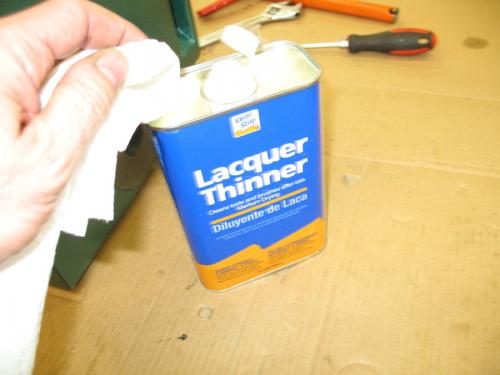
I used white grease on the top bearings to make them slide into the lid easier. Then I added the Permatex, said a prayer that it would go together easy and carefully aligned the lid pins with the bottom.
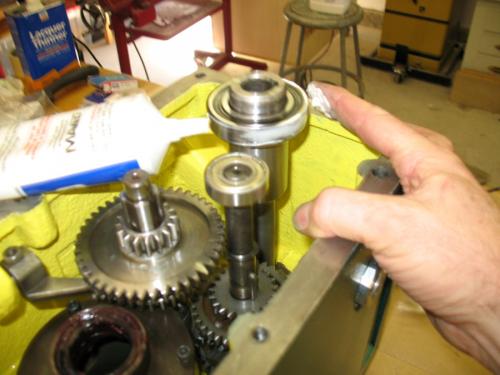
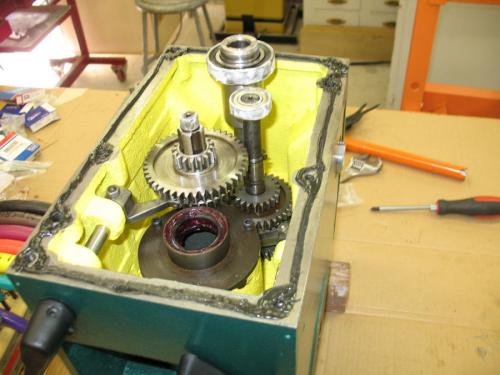
Once I got it started, I kept tapping with a rubber mallet. Many light blows are better than heavy blows. Also turn the motor shaft to make sure the gears are meshing otherwise the lid may hang up on gears that dont mesh.
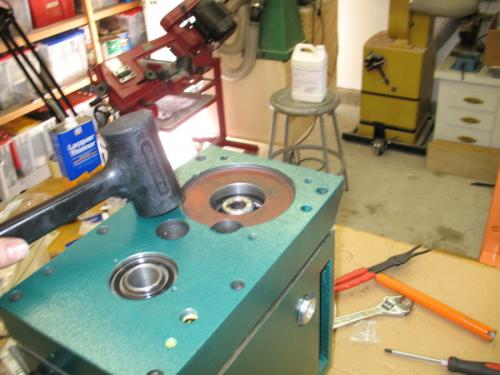
Once the lid was down enough for the bolts to reach, I started tightening the bolts evenly.
Keep checking that your gap between the top and bottom is even.
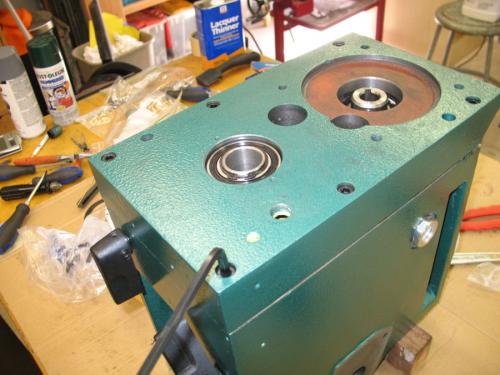
Gradually with light blows and even tightening the lid came all the way down. I kept checking that turning the motor shaft resulted in motion at the spindle shaft. I also tested the speed selectors a few times to make sure they worked.
The lid went all the way down and I had a nice small amount of squeeze out all the way around.
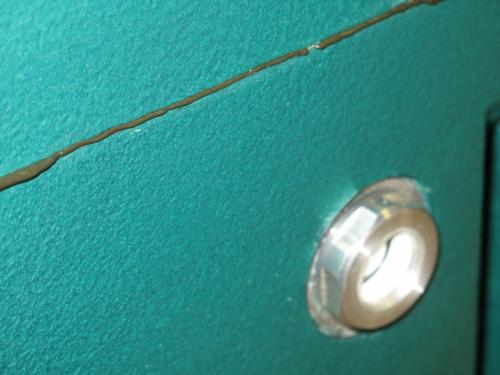
Whew!! Its together and turning the motor shaft results in the spindle shaft turning in all six gears.
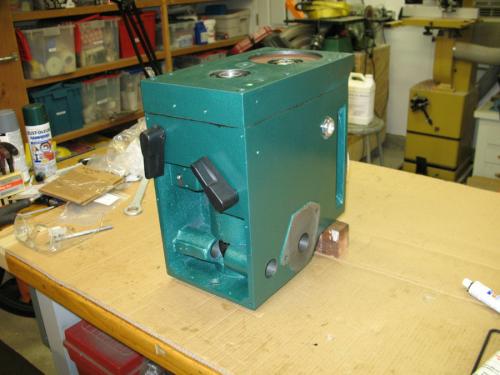
Make sure everything is correct because it will be difficult to go back from here. I used Laquer Thinner to clean the two mating surfaces. This will remove any oil, grease or paint so that the Permatex can seal properly.
I used white grease on the top bearings to make them slide into the lid easier. Then I added the Permatex, said a prayer that it would go together easy and carefully aligned the lid pins with the bottom.
Once I got it started, I kept tapping with a rubber mallet. Many light blows are better than heavy blows. Also turn the motor shaft to make sure the gears are meshing otherwise the lid may hang up on gears that dont mesh.
Once the lid was down enough for the bolts to reach, I started tightening the bolts evenly.
Keep checking that your gap between the top and bottom is even.
Gradually with light blows and even tightening the lid came all the way down. I kept checking that turning the motor shaft resulted in motion at the spindle shaft. I also tested the speed selectors a few times to make sure they worked.
The lid went all the way down and I had a nice small amount of squeeze out all the way around.
Whew!! Its together and turning the motor shaft results in the spindle shaft turning in all six gears.
henryarnold, proud to be a member of MetalworkingFun Forum since Apr 2012.





